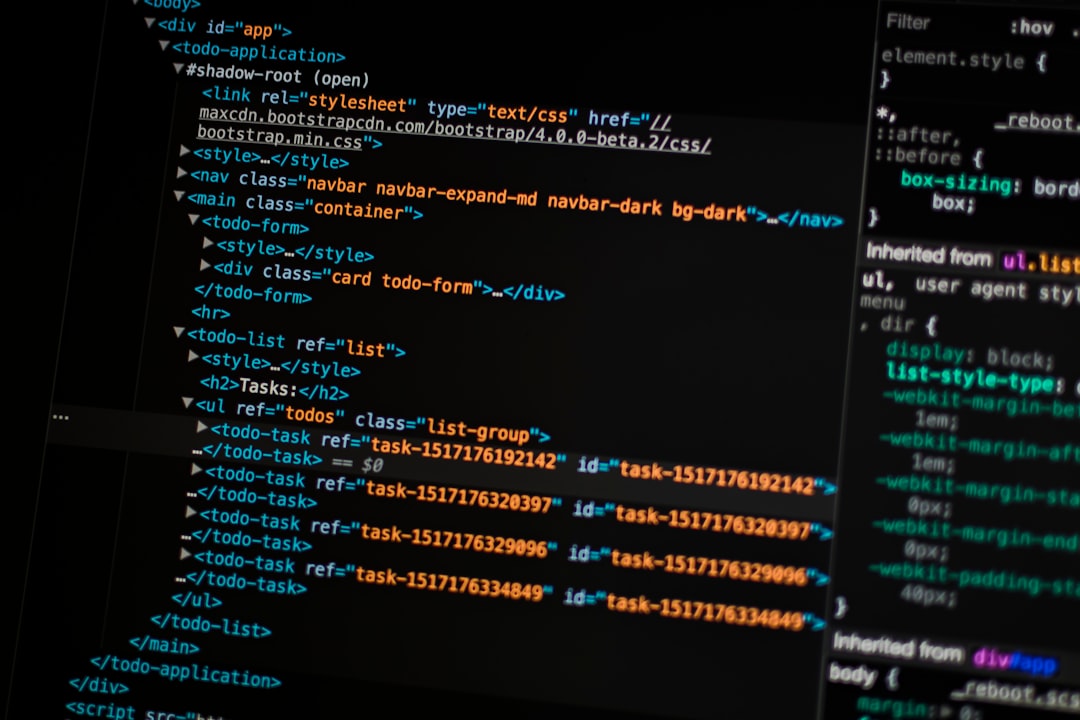SQL injection attacks are a prevalent and dangerous form of cyber threat that targets databases through vulnerabilities in web applications. When you interact with a web application, you often input data that is processed by a database. If the application does not properly validate or sanitize this input, an attacker can manipulate the SQL queries executed by the database.
This manipulation can lead to unauthorized access to sensitive data, data corruption, or even complete control over the database server. Understanding how these attacks work is crucial for anyone involved in web development or database management. To illustrate, imagine you are using a login form on a website.
If the application directly incorporates your input into an SQL query without any checks, an attacker could input a specially crafted string that alters the query’s logic. For instance, instead of entering a username and password, they might input something like “admin’ OR ‘1’=’1”. This could trick the database into granting access without valid credentials.
Recognizing the mechanics behind SQL injection is the first step in safeguarding your applications and data from such threats.
Key Takeaways
- SQL injection attacks occur when malicious code is inserted into a SQL query via user input
- Best practices for input validation include using whitelists, blacklists, and regular expressions to filter user input
- Parameterized queries help prevent SQL injection attacks by separating SQL code from user input
- Implementing the least privilege principle limits the access rights of users and applications to only the necessary resources
- Regularly updating and patching software helps to fix vulnerabilities and prevent exploitation by attackers
- Web application firewalls can help protect against SQL injection attacks by filtering and monitoring HTTP traffic
- Educating and training developers on secure coding practices is essential for preventing SQL injection attacks
- Monitoring and auditing database activity can help detect and respond to SQL injection attacks in real-time
Best Practices for Input Validation
Input validation is your first line of defense against SQL injection attacks. By ensuring that all user inputs are checked and sanitized before being processed, you can significantly reduce the risk of exploitation. This involves defining what constitutes valid input for each field in your application.
For example, if a field is meant to accept only numeric values, you should implement checks to ensure that only numbers are accepted. This proactive approach helps to filter out potentially harmful inputs before they reach your database. Moreover, it’s essential to adopt a whitelist approach to input validation.
Instead of trying to identify and block malicious inputs (a blacklist approach), you should specify exactly what is allowed. This could mean allowing only certain characters or formats for each input field. By doing so, you create a more robust security posture that minimizes the chances of an attacker successfully injecting harmful SQL code into your queries.
Regularly reviewing and updating your validation rules as new threats emerge is also vital to maintaining security.
Using Parameterized Queries

One of the most effective methods to prevent SQL injection attacks is through the use of parameterized queries, also known as prepared statements. When you use parameterized queries, you separate the SQL code from the data being inputted by users. This means that even if an attacker tries to inject malicious SQL code, it will be treated as data rather than executable code.
As a result, the database engine can safely process the query without executing any harmful commands. Implementing parameterized queries is straightforward and can be done in most programming languages and database management systems. For instance, if you are using PHP with MySQL, you can utilize prepared statements with PDO (PHP Data Objects) or MySQLi.
By binding parameters to your SQL statements, you ensure that user inputs are handled securely. This practice not only protects against SQL injection but also enhances the overall integrity of your database interactions.
Implementing Least Privilege Principle
| Metrics | Value |
|---|---|
| Number of users with elevated privileges | 25 |
| Number of access control violations | 3 |
| Percentage of systems with least privilege implemented | 80% |
The principle of least privilege is a fundamental security concept that dictates that users and applications should only have the minimum level of access necessary to perform their functions. By applying this principle to your database management, you can significantly reduce the potential impact of an SQL injection attack. For example, if an application only requires read access to certain tables, it should not be granted write access or administrative privileges.
To implement this principle effectively, you should regularly review user roles and permissions within your database. Ensure that each user account has only the permissions it needs to perform its tasks and nothing more. Additionally, consider creating separate accounts for different applications or services that interact with your database, each with tailored permissions.
This way, even if one account is compromised, the attacker’s ability to cause damage is limited.
Regularly Updating and Patching Software
Keeping your software up to date is another critical aspect of maintaining security against SQL injection attacks. Software vendors frequently release updates and patches that address known vulnerabilities, including those that could be exploited through SQL injection. By regularly applying these updates, you ensure that your systems are protected against the latest threats.
Establishing a routine for checking for updates and applying patches can help you stay ahead of potential vulnerabilities. This includes not only your database management system but also any frameworks, libraries, and plugins used in your web applications. Automating this process where possible can further enhance your security posture by reducing the chances of human error or oversight.
Utilizing Web Application Firewalls

A web application firewall (WAF) serves as an additional layer of security between your web application and potential attackers. By filtering and monitoring HTTP requests, a WAF can help detect and block malicious traffic before it reaches your application or database. This proactive measure can significantly reduce the risk of SQL injection attacks and other web-based threats.
When implementing a WAF, it’s essential to configure it properly to ensure it effectively identifies and mitigates SQL injection attempts. Many WAFs come with built-in rulesets designed specifically to detect common attack patterns associated with SQL injection. Regularly reviewing and updating these rulesets will help maintain their effectiveness against evolving threats.
Additionally, consider integrating your WAF with other security measures for a more comprehensive defense strategy.
Educating and Training Developers
Your development team plays a crucial role in maintaining the security of your applications against SQL injection attacks. Providing ongoing education and training on secure coding practices is essential for fostering a security-conscious culture within your organization. Developers should be well-versed in understanding how SQL injection works and the best practices for preventing it.
Consider organizing regular workshops or training sessions focused on secure coding techniques, including input validation, parameterized queries, and the least privilege principle. Encouraging developers to stay informed about emerging threats and vulnerabilities will empower them to write more secure code. Additionally, fostering an environment where developers feel comfortable discussing security concerns can lead to more robust applications overall.
Monitoring and Auditing Database Activity
Finally, continuous monitoring and auditing of database activity are vital for detecting potential SQL injection attempts and other suspicious behavior. By keeping an eye on database logs and user activity, you can identify anomalies that may indicate an attack in progress or a breach that has already occurred. Implementing automated monitoring tools can help streamline this process and provide real-time alerts for unusual activities.
Regular audits of your database security practices can also help identify areas for improvement. This includes reviewing user permissions, input validation rules, and overall application architecture for potential vulnerabilities. By taking a proactive approach to monitoring and auditing, you can enhance your ability to respond quickly to threats and maintain the integrity of your data.
In conclusion, protecting against SQL injection attacks requires a multifaceted approach that includes understanding the nature of these threats, implementing best practices for input validation, using parameterized queries, adhering to the least privilege principle, regularly updating software, utilizing web application firewalls, educating developers, and monitoring database activity. By taking these steps seriously, you can significantly reduce the risk of SQL injection attacks and safeguard your applications and data from potential harm.
To further enhance your understanding of cybersecurity measures and protect your systems against SQL injection attacks, I recommend reading an insightful article on Cybersecurity Decoder. The article provides detailed strategies and best practices for securing critical infrastructure against various cyber threats, including SQL injection. You can access the article by clicking on this link: Critical Infrastructure Security: Hello World. This resource is particularly useful for IT professionals looking to bolster their defenses and ensure their data handling processes are secure.
FAQs
What is SQL injection?
SQL injection is a type of cyber attack that allows hackers to execute malicious SQL statements in a web application’s database. This can lead to unauthorized access, data manipulation, and potentially the deletion of data.
How does SQL injection occur?
SQL injection occurs when a web application does not properly validate or sanitize user input. Hackers can exploit this vulnerability by inserting malicious SQL code into input fields, such as login forms or search boxes, which can then be executed by the application’s database.
What are the potential risks of SQL injection?
The potential risks of SQL injection include unauthorized access to sensitive data, data manipulation, data deletion, and in some cases, complete control over the affected database. This can lead to financial loss, reputational damage, and legal consequences for the affected organization.
How can I prevent SQL injection?
To prevent SQL injection, developers should use parameterized queries or prepared statements, input validation, and proper error handling. Additionally, using web application firewalls and regularly updating and patching software can help mitigate the risk of SQL injection attacks.
What are some best practices for avoiding SQL injection?
Some best practices for avoiding SQL injection include using parameterized queries or prepared statements, validating and sanitizing user input, limiting database permissions, and regularly conducting security assessments and code reviews. It is also important to stay informed about the latest security threats and vulnerabilities.



